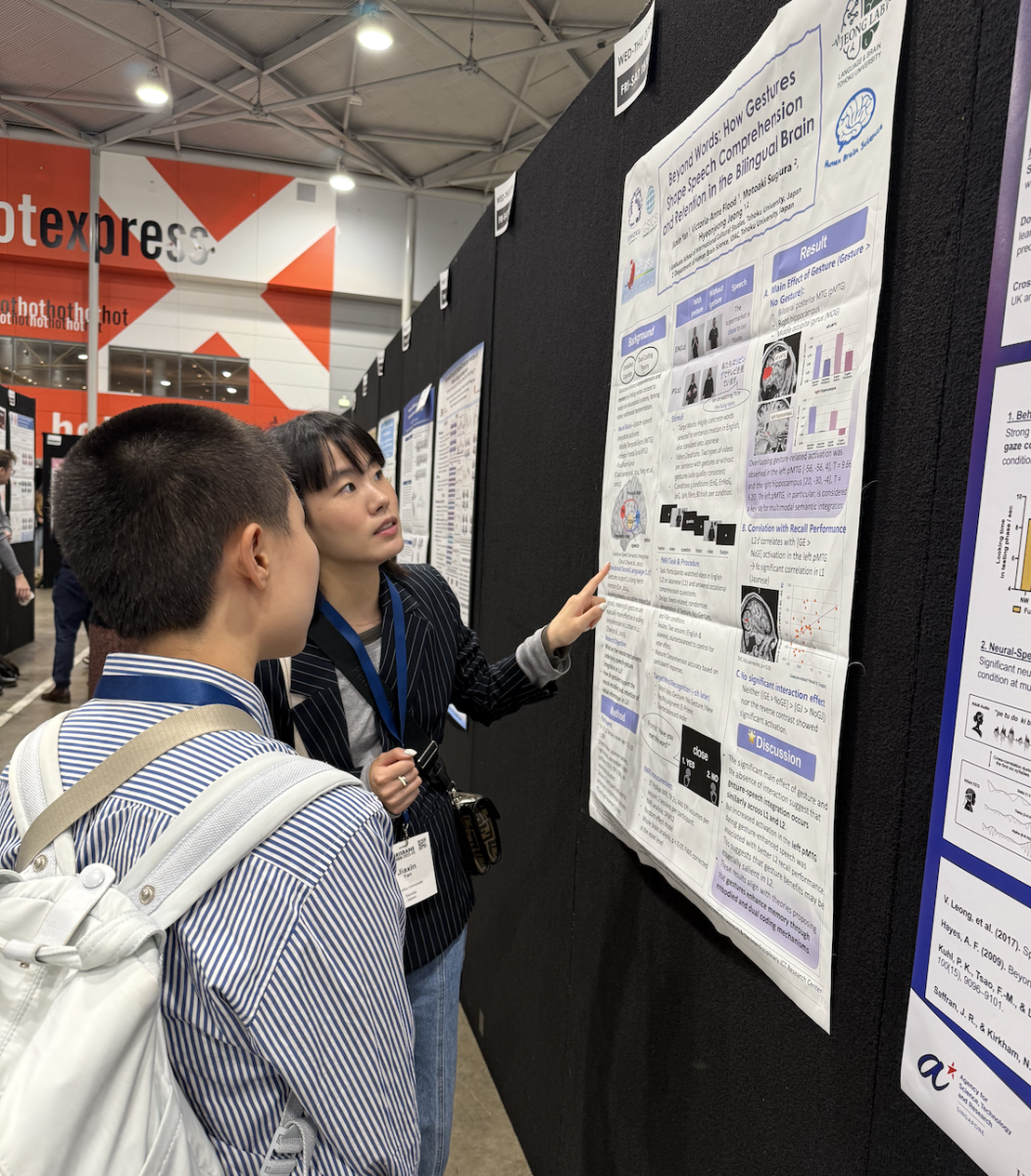Beyond Words: How Gestures Shape Speech Comprehension and Retention in the Bilingual Brain
Yan Jiaxin, student of Graduate School of International Cultural Studies, Tohoku University, have attended the Organisation for Human Brain Mapping (OHBM) this year, aiming to share her recent research findings and to learn from the works of other fellow researchers across disciplines. Her research explores how gestures—an inherently human, spontaneous, and multimodal form of communication—support speech comprehension and memory, particularly in a second language (L2) context. While previous studies have identified key neural substrates such as the middle temporal gyrus (MTG), inferior frontal gyrus (IFG), and parahippocampal regions in integrating gesture and speech in one’s native language (L1), the neural mechanisms in L2 remain less clear. Her study investigated these mechanisms and revealed that gestures are particularly beneficial for L2 speech processing, especially as activation in the left posterior middle MTG appears to play a critical role in supporting L2 verbal memory.
OHBM, as a multidisciplinary conference, brought together researchers from fields such as computer science, functional connectivity, and cognitive neuroscience. She was pleasantly surprised to see how people from diverse backgrounds resonated with the universality of gesture in human interaction. Many raised thought-provoking and insightful questions about her experiment design, results, and the broader implications for multilingual communication.

Jiaxin Yan, Victoria-Anne Flood, Motoaki Sugiura, Hyeonjeong Jeong
Beyond Words: How Gestures Shape Speech Comprehension and Retention in the Bilingual Brain
Organization for Human Brain Mapping, Brisbane, Queensland, Australia【 Poster 】
https://www.humanbrainmapping.org/i4a/pages/index.cfm?pageid=1

